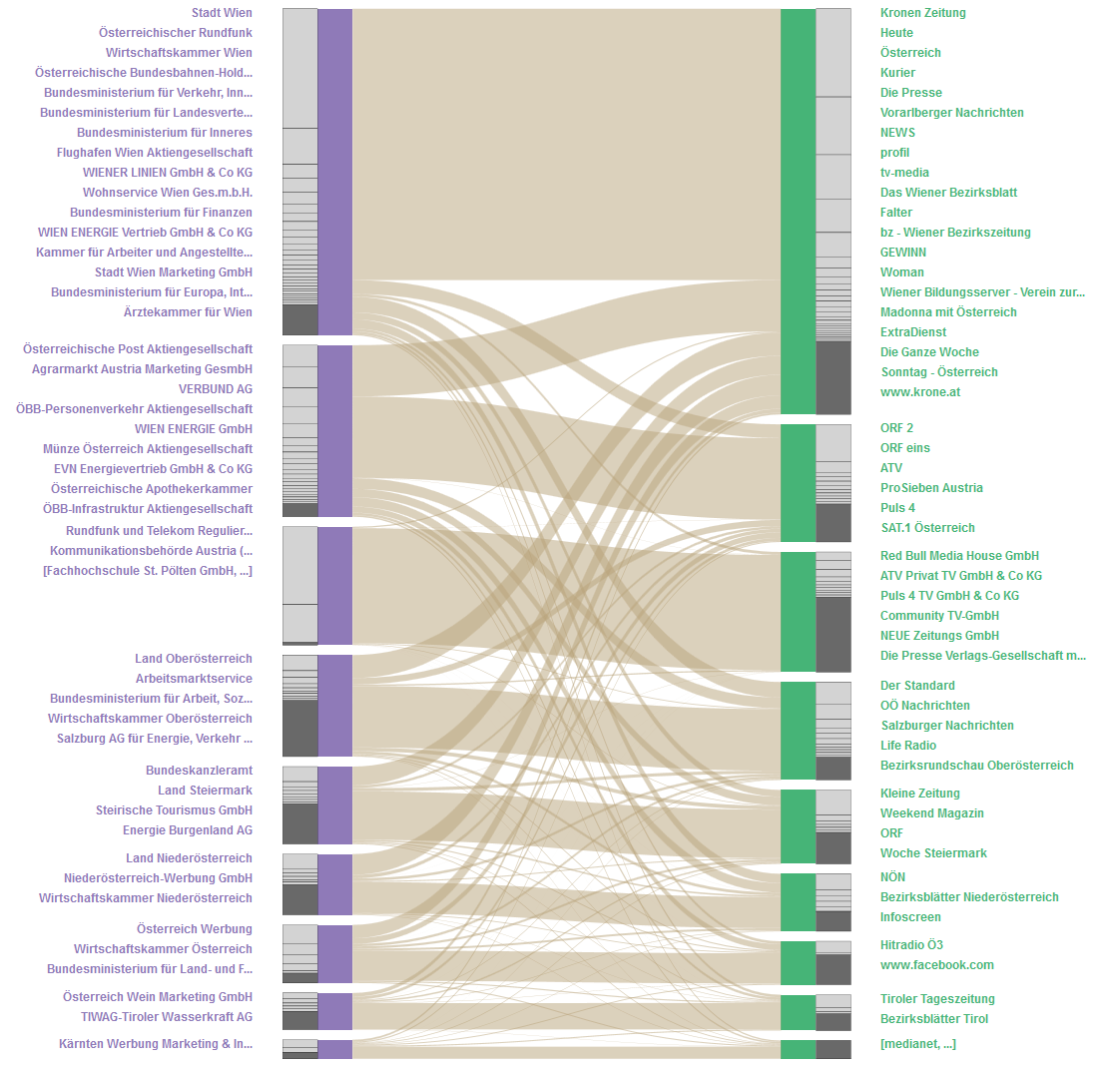Casual Exploration of Large Time-Dependent Bipartite Graphs
Bipartite graphs are typically visualized using linked lists or matrices. However, these classic visualization techniques neither scale well with the number of nodes nor is it possible to convey temporal developments of the graph. Interactive visualization techniques for large bipartite graphs typically introduce special encodings that reveal very limited information on the first glance.
Dynamic Bipartite Cluster Flows (BiCFlows) is a new casual exploration interface for large, time-dependent bipartite graphs for a general audience. We use two different clustering techniques to build a hierarchical aggregation of nodes and edges supporting different exploration strategies. Aggregated nodes and edges are then visualized with classic linked lists and nested time series visualizations. We demonstrate the usefulness of the technique using two data sets: a public database of media advertising expenses of public authorities in Austria and author-keyword co-occurrences from the IEEE Visualization Publication collection.
